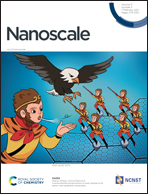A 3D-mixed ion/electron conducting scaffold prepared by in situ conversion for long-life lithium metal anodes†
Abstract
Lithium (Li) metal is widely considered the most promising anode material because of its ultrahigh specific energy. However, the obvious volume change and uncontrollable dendrite growth hinder its commercial applications. Herein, we designed a 3D scaffold of Cu3P nanoarray-modified Cu foam via in situ conversion (3D MIECS). Uniform lithiophilic Cu3P nanoarrays were in situ grown inside the Cu foam (Cu3P NA@CF) that presented a high specific surface area and very low nucleation overpotential. Specifically, the lithiated Cu3P nanoarrays possess the features of mixed ion/electron conductivity and structural stability responsible for uniform Li deposition in the whole three-dimensional space of the metal skeleton, showing scarcely any volume expansion or structural collapse during the continuous Li plating/stripping process. Therefore, the modified Cu foam host achieves dendrite-free cycling over 600 cycles at a current density of 3 mA cm−2 with a coulombic efficiency (CE) of 99.1%. A 3D MIECS-Li||LiFePO4 full cell holds a capacity retention of 80% with a stable CE of 99.63% over 1000 cycles at 3 C.



 Please wait while we load your content...
Please wait while we load your content...